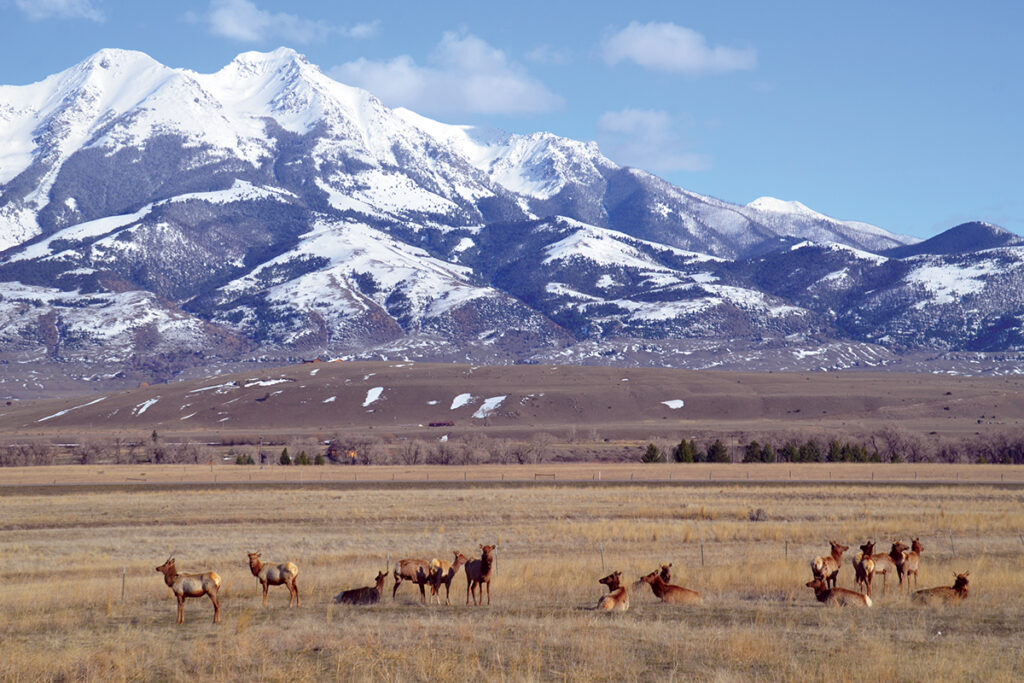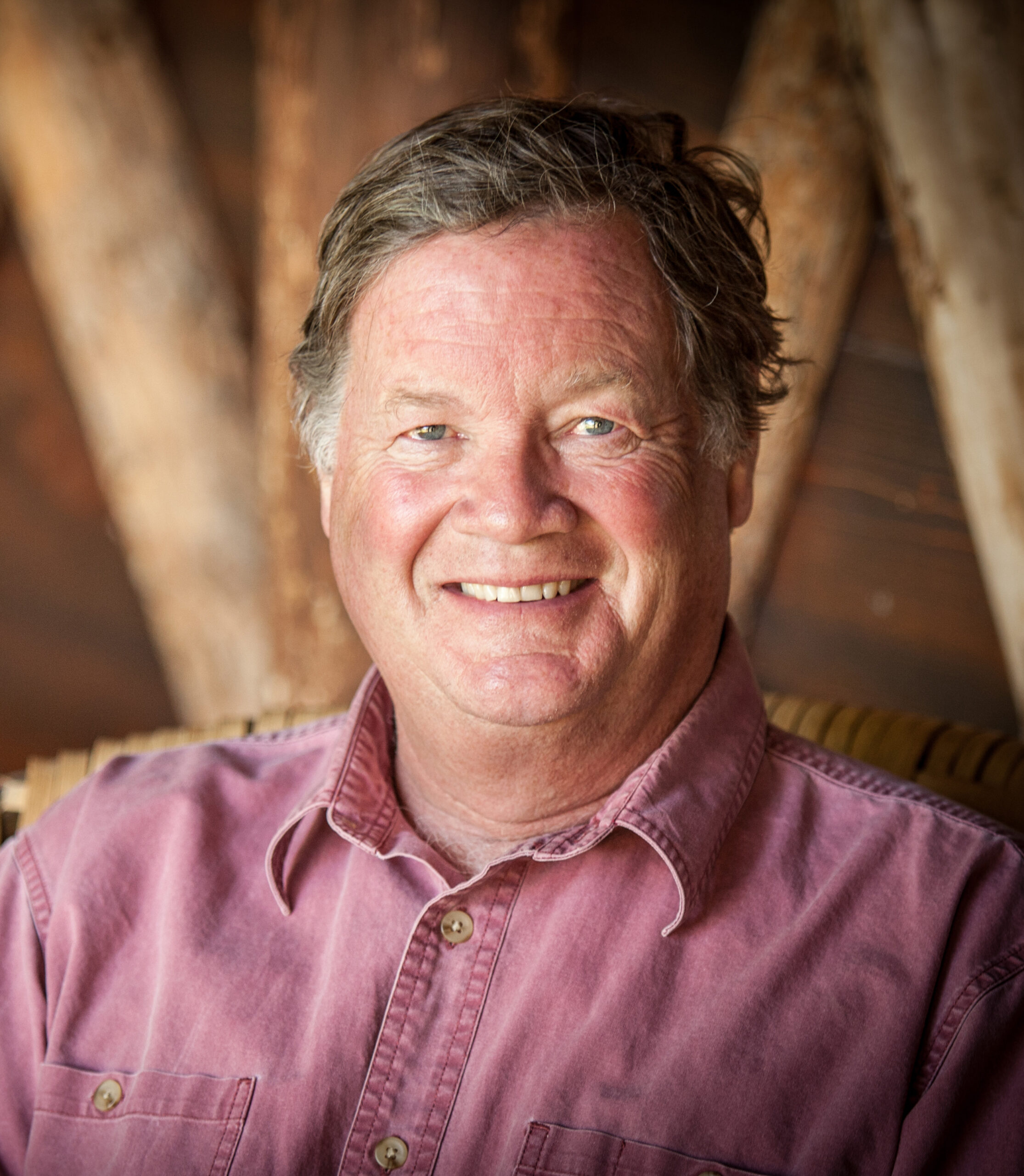This article was originally published in the Bozeman Daily Chronicle.
Superlatives abound when describing the natural wonders of the Greater Yellowstone Ecosystem (GYE). It is routinely described as “one of the largest nearly intact temperate ecosystems on Earth” and is renowned for the geological wonders, abundant wildlife, and scenic vistas of Yellowstone and Grand Teton National Parks. But often overlooked is the tremendous importance of the region’s private lands and the owners who maintain them for agriculture, open space, and wildlife habitat.
By the 1870s, when Yellowstone National Park and the first forest reserves were established, much of the region’s best soils, best access to water, and most productive ecosystems had been settled into private ranches and homesteads. Today, scientists, land managers, and conservation practitioners are increasingly documenting the outsized role these private lands play in the overall health and integrity of the GYE.
Private landowners, particularly farmers and ranchers, in the GYE steward many of the things we enjoy most about living in this region—from abundant wildlife to open viewsheds. Ranchers and farmers raise food, fiber, and other products, and in the process provide habitat and resources for the GYE’s wildlife. These “working lands” are essential parts of the local economy for what they produce (e.g., cattle and hay) and what they conserve (e.g., open space and wildlife habitat). But living with wildlife often comes at an economic cost that makes it harder to make a living on the land. Because of the critical role they play in conserving wildlife for the public benefit, keeping farming and ranching financially sustainable is a vital conservation goal.
The wildlife benefits these lands provide depend on the continued economic viability of their owners. Without it, ranches and farms currently supporting wildlife will be sold or converted to another use less favorable to wildlife: native grasslands to row agriculture, intact open space to residential development. Population growth, soaring land prices, and volatile agricultural prices already weigh heavily on the rancher and farmer. These pressures increase daily as more and more people elect to live in attractive areas with ample outdoor recreational opportunities, and as climate change and pandemics drive people to our region, that pressure will only increase.
Montana’s Paradise Valley, located at the northern gateway to Yellowstone National Park and surrounded by national forest lands, is a textbook example of working-land wildlife stewardship. The valley and its ranching community support a range of wildlife, including elk, mule deer, bighorn sheep, and pronghorn antelope. The region also hosts expanding populations of gray wolf, grizzly bear, and mountain lion. Much of the responsibility and financial burden of providing crucial habitat for these species falls on the valley’s private landowners—yet landowners often feel their perspectives are not adequately heard, never mind understood.
In 2019, I began working with the Property and Environment Research Center (PERC) and the Upper Yellowstone Watershed Group to undertake a series of conversations with ranchers and other landowners in Paradise Valley about the realities of living with wildlife.
Through kitchen-table conversations and surveys throughout the valley, we found that wildlife imposes a range of costs on landowners, including competition with livestock for forage, crop damage, wrecked fencing and gardens, livestock disease risk, and increased trespass by hunters (including shed hunters). Eighty-one percent of the Paradise Valley landowners surveyed stated that they suffered economic impacts from wildlife, with elk being the primary culprit.
Our recently released report, Elk in Paradise: Conserving Migratory Wildlife and Working Lands in Montana’s Paradise Valley, found that paradise Valley landowners are united in their interest to maintain open space, improve land health, and preserve agricultural traditions and a rural way of life. But as elk spend more time on private lands in the valley, and in greater numbers, tolerance can wear thin. Many landowners are looking for ways to coexist with wildlife but are increasingly leery of empty promises of cooperation, the potential for burdensome regulation, and loss of property rights. They want solutions that preserve their autonomy and provide tangible benefits for supporting wildlife.
Such solutions include establishing a Paradise Valley Working Lands Group, engaging landowners as full shareholders in wildlife management decisions and consideration of innovative financial approaches such as a brucellosis bond to reduce the impact of sudden and severe financial loss and elk occupancy agreements where private landowners are incentivized to provide quality habitat for wildlife.
A final important finding is many landowners feel that the public benefits they provide are too often overlooked by the state and federal land management agencies, hunters, and the general public. For example, all too often, discussions on collaborating with private landowners begin with a demand for public access to private lands.
Amid growing public interest in the future of elk populations in the West, the essential role of ranchers and other landowners must gain recognition. In large part, conserving elk will mean conserving our working lands that elk rely on for winter range, migration corridors, and security. We must also understand and incorporate the perspectives of landowners who bear the costs of living with wildlife into state and federal policy and budget decisions. As one Paradise Valley ranchers confided to me, “I’m more than just another stakeholder; it’s my land, and my livelihood.”




